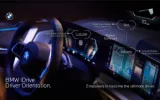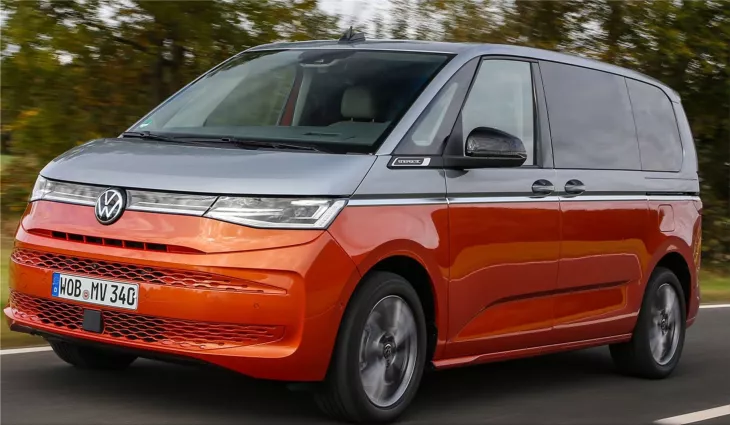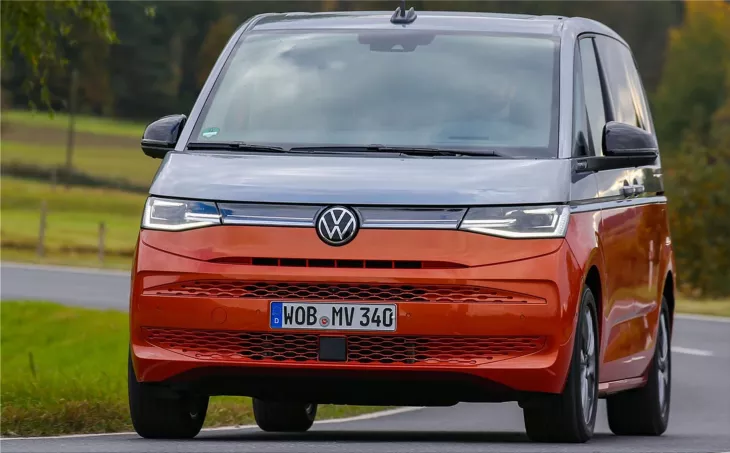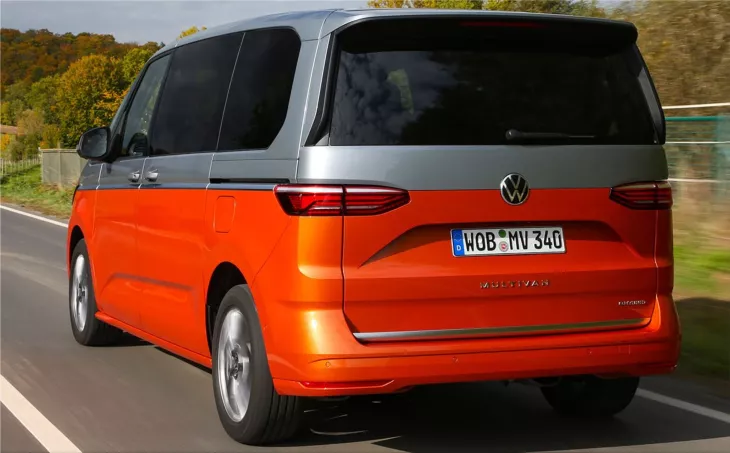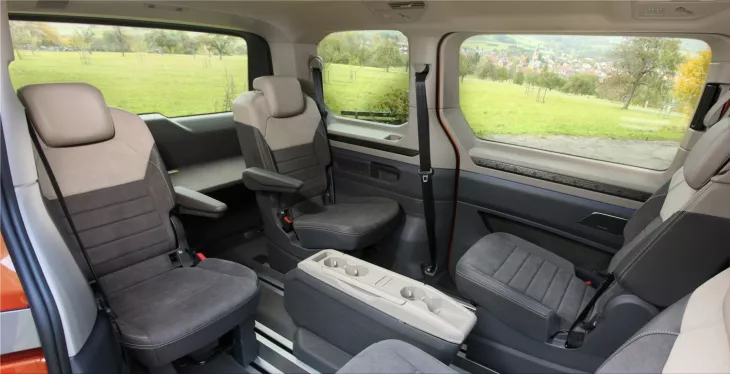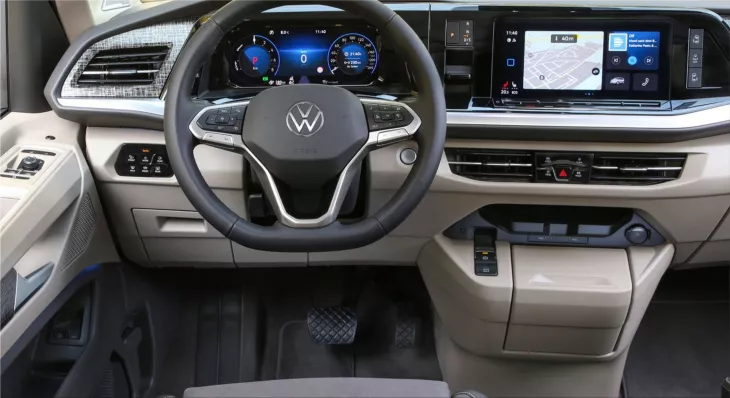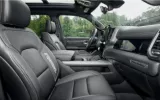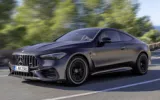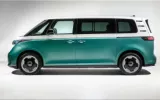The designers of the new Volkswagen Multivan appear to have taken the saying go big or go home to heart because the people carrier they've created is incredibly massive. The Volkswagen Multivan is built on the same platform as some of the Volkswagen Group's best-selling SUVs and family vehicles, such as the Volkswagen Tiguan and Skoda Kodiaq. This distinguishes the Multivan from significant competitors such as the Citroen Spacetourer, Peugeot Traveller, and Ford Tourneo Custom, built on vans. It also unlocks the same kind of modern driving aids that you'd expect to find on Volkswagen's ordinary cars, such as the popular Golf.
The Volkswagen Multivan has an additional advantage in that it is available as a plug-in hybrid, something none of its competitors offer. On paper, the new foundations indicate that the Multivan should be more elegant and comfortable than van-based competitors. It should also have the ability to reduce your operating costs. But, can the reality match the notoriety?
The Volkswagen Multivan plug-in hybrid is powered by a 148hp 1.4-liter petrol engine that works in tandem with a 114hp electric motor to create a total of 215hp. It gives the Multivan a sharp sensation, especially at lower speeds, where the electric motor's immediate rush of pulling force makes it simple to break away from traffic lights or overtake slower-moving cars.
Official numbers indicate that the Volkswagen Multivan can go up to 31 miles on a single charge of its 13kWh battery. However, that figure is unlikely to be replicated in real-world conditions. Therefore, we believe that 27 miles from a full charge should be possible without consuming a single drop of gasoline.
Charging takes a little under three and a half hours if you use a 3.7kW wall box charger, and it will take longer if you use a three-pin socket. If you want to go as close to the Multivan's official fuel economy number of 156.9mpg as possible, you'll need to keep the battery charged.
There are also 134hp and 201hp 2.0-litre petrol, with a 148hp 2.0-liter diesel entering the lineup next summer. We haven't tested these yet, but the lower-powered gasoline is likely to struggle on quicker roads, especially if you're carrying six passengers.
The handling of the Volkswagen Multivan is surprisingly light given its size and weight, but it's also incredibly easy to maneuver through tight city streets. It also weighs up nicely at high speeds, albeit there is little meaningful feedback. It is, however, accurate, which means you won't have to make tweaks mid-corner to maintain the car on your intended course. You won't want to hurry around curves since the Multivan leans considerably into corners due to its weight and boxy form.
When you start the Multivan, it defaults to electric-only mode, which you must modify via the infotainment system, but the 'hybrid' driving mode, which combines electric and petrol power for maximum economy, works well.
The Multivan plug-in hybrid only has a six-speed automatic transmission, but it does a fantastic job shifting up and down the gears. You can take control by using the paddles behind the steering wheel, but we found it was better to let the car determine what best for itself almost all of the time was.
The Multivan has a lot of wind and road noise, as you'd expect from a vast, boxy automobile, but it's still better than competing van-based people movers like the Spacetourer and Traveller.
The ride is typically comfortable; however, like a van, we believe the Multivan will be most comfortable when fully loaded with people and luggage. With only two passengers on board, it fidgets a little too much, and potholes send a significant thump back through the car.
No matter how you want to use the Volkswagen Multivan, it will most likely accommodate you. Each seat may be moved – or removed – independently thanks to runners on the floor.
Whether you choose six or seven seats, the entire center console can be pulled rearward towards the rear passengers, where its slide-out tables may be used. Those chairs may also be rotated around, allowing your passengers to look into each other's eyes during the voyage if they so choose. Alternatively, you may remove one side of the chairs altogether, resulting in a large area that can accommodate bicycles, bedroom cabinets, or whatever else you need to transport. Alternatively, remove all of the seats and utilize the Multivan as a van.
To begin with, we believe that everyone will be able to become comfortable behind the wheel. The driver's seat is 18-way adjustable, as is the steering wheel adjusts up and down and in and out, and the chair, pedals, and wheel are all nicely matched. You might as well be seated in a different postcode from your front passenger because there's no way your elbows will ever touch across the vehicle. There's also outstanding visibility due to a lofty seating position and large side windows that provide an excellent perspective at intersections.
The new Volkswagen Multivan is opulent in the back. Even large and tall passengers will find enough of head and legroom, and third-row travelers will not feel tricked. Those in the back seats have their cupholders and two USB-C charging ports. Add those to the two in the second row and two more at the front, and no one will be complaining about their gadgets running out of power.
While there are some lovely touches in the Multivan – for example, the soft plastic trims that run across each door and on the dashboard – you don't have to look far to locate the scratchy, harsh plastics that are also used on its van-based rivals. At the very least, everything appears to be well-made and should withstand the rigors of family life.
Volkswagen will offer the Multivan in short and long versions, with the wheelbase remaining the same.
When three rows of seats are installed, the boot capacity increases dramatically, from 469 liters to 763 liters. In any event, a family's vacation luggage is unlikely to cause problems for the Multivan, and the boot has a beautiful, square form. However, keep in mind that the boot lid extends outside and upwards, requiring considerably more space to park.
The basic 10.25-inch digital instrument display is beautifully adjustable and can show you the sat-nav map, driving statistics, and other information. At the same time, the 10.0-inch infotainment touchscreen is taken from the newest Volkswagen Golf. Unfortunately, this isn't a positive thing because the system may be slow to respond to your inputs and has a plethora of complex menus. While you don't have to go too far to change the temperature, we'd like genuine buttons and knobs — utilizing the system while on the go is more distracting than it needs to be.



